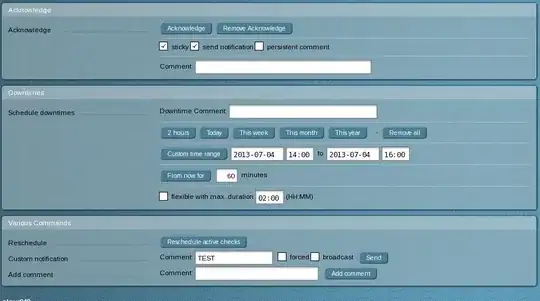I'll answer with some gritty details. Jenny D is to the point but I'd like to be more precise about "no further alarms".
Normally, Nagios will notifiy you on each status change:
- So if your service becomes "WARN", you get a notification.
- You acknoweledge the service now, and will not get another (i.e. perioditc) notification as long as the service stays in the "WARN" state.
- If it traverses to "CRIT", you get a notification.
- If it goes back to "WARN", you get a notification.
- If it then goes to "OK", you get a recovery notification.
- After that, acknowledgment is expired since it becomes "OK"
In the sticky scenario, the will be no notifications about traversals between problem states:
- So if your service becomes "WARN", you get a notification.
- You acknoweledge the service now with the sticky option set.
- If it traverses to "CRIT", you get no notification.
- If it goes back to "WARN", you get no notification.
- If it then goes to "OK", you get a recovery notification.
- After that, the sticky setting is removed since it's a property of the acknowledgment - expired since it becomes "OK"
In human terms:
Not setting the sticky option means:
I'm working on the issue, but this will take a while, for example, while it's just a WARN I'm not authorized to map a new disk. If suddenly stuff escalates and the filesystem fills to CRIT, I need to know since then we move from proactive maintenance to an emergency fix.
The sticky option allows you to chose some other way of doing it.
I'm working on the issue and will keep an eye on it while I work. During my work, it can worsen temporarly until I'm DONE and then it'll be fine
FYI:
If you use the persistent comment option, the acknowledgement will be gone, but the text you entered will remain
